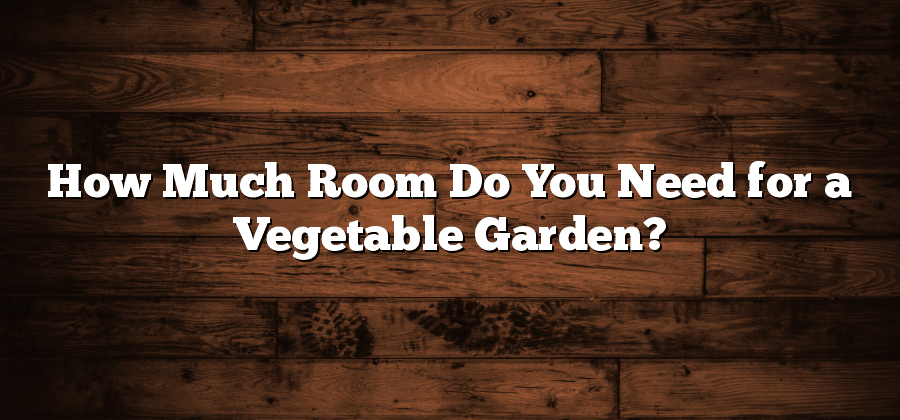2) Types of Vegetables to Grow
When planning your vegetable garden, one of the first decisions you need to make is which types of vegetables to grow. This choice will depend on a variety of factors, including your personal preferences, available space, and local climate. It’s important to consider the specific requirements and needs of each vegetable to ensure a successful and productive garden.
Popular vegetables for home gardens include tomatoes, peppers, cucumbers, lettuce, carrots, and beans. These vegetables are relatively easy to grow and provide a wide range of flavors and culinary uses. Additionally, they are known for their high nutritional value, making them excellent choices for a healthy and sustainable garden. However, don’t limit yourself to just these options! Research and explore the wide variety of vegetables available, and consider experimenting with unique and lesser-known varieties for a more diverse and interesting harvest.
3) Plant Spacing and Layout
Plant spacing and layout are crucial aspects of growing a successful vegetable garden. Proper spacing ensures that each plant has enough room to grow and receive the necessary nutrients and sunlight. It also helps to prevent overcrowding, which can lead to competition for resources and increased susceptibility to diseases.
When planning your vegetable garden, it is essential to consider the mature size of each plant and its recommended spacing. Some plants, such as tomatoes and peppers, require more space and should be given at least two feet of space between each plant. On the other hand, smaller plants like lettuce and herbs can be placed closer together, with around six inches between each plant. By following these guidelines, you can maximize the productivity of your garden by allowing each plant to thrive and ensuring efficient use of space.
Layout is another important aspect to consider when designing your vegetable garden. A well-designed layout takes into account factors such as sun exposure, accessibility, and convenience. Placing taller plants on the north side of your garden can prevent them from casting shadows on shorter plants, ensuring that all plants receive an adequate amount of sunlight. Additionally, arranging your plants in a way that allows for easy access and maintenance can save you time and effort in the long run. Consider using pathways or raised beds to create an organized and efficient layout for your vegetable garden.
4) Sunlight and Shade Requirements
Sunlight and shade requirements are essential considerations when planning your vegetable garden. Different vegetables have varying needs for sunlight exposure, and understanding these requirements is crucial for their successful growth.
Some vegetables, such as tomatoes and peppers, require full sunlight for at least six to eight hours a day. These sun-loving plants rely on ample sunlight to produce the energy needed for photosynthesis and, ultimately, a bountiful harvest. On the other hand, there are vegetables like lettuce and spinach that thrive in partially shaded areas. These leafy greens prefer cooler environments and can benefit from some protection against the scorching afternoon sun. By understanding the sunlight requirements of each vegetable you plan to grow, you can strategically arrange your garden beds to maximize light exposure for all your plants.
5) Watering and Drainage Needs
When planning your vegetable garden, it is important to take into consideration the watering and drainage needs of the plants. Proper watering is crucial for the growth and development of vegetables, as it ensures they receive the necessary nutrients and moisture. Each type of vegetable may have different watering requirements, so it is essential to do some research on the specific needs of the plants you plan to grow. Some vegetables, like tomatoes or cucumbers, require consistent moisture in the soil, while others, such as peppers or beans, prefer a slightly drier environment. Watering methods will also vary, with options like sprinklers, drip irrigation, or hand watering being available. Assessing your garden’s water needs and implementing an appropriate watering system will help your vegetables thrive.
In addition to watering, proper drainage is also essential for healthy vegetable plants. Excess water in the soil can lead to the development of diseases like root rot or fungal infections, which can severely damage or even kill the plants. To ensure adequate drainage, it is important to have loose, well-draining soil. This can be achieved by adding organic matter, such as compost, to improve the soil’s structure and drainage capabilities. Consider the topography of your garden as well; avoid planting in low-lying areas where water tends to accumulate. Another technique to improve drainage is to create raised beds, which allow for better water flow. By taking care of the watering and drainage needs of your vegetable garden, you are setting a strong foundation for successful growth and a bountiful harvest.
Calculating the Space Needed for Your Vegetable Garden
Determining the appropriate space for your vegetable garden is essential for optimal growth and harvest. Before embarking on your planting journey, it is crucial to calculate the space required for each vegetable. This will ensure that your plants have ample room to spread their roots and grow to their full potential.
To calculate the space needed, start by researching the specific requirements for each vegetable variety. Factors such as spread, height, and recommended planting distance will influence the overall area needed. For instance, vegetables like tomatoes and peppers typically require more space due to their sprawling nature, while leafy greens like lettuce can be planted closer together. By referring to gardening resources or consulting with experts, you can determine the ideal spacing for each vegetable, enabling you to plan your garden layout effectively.






